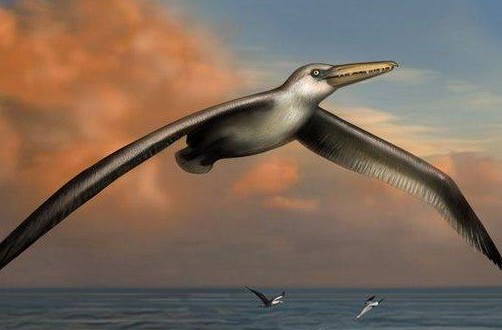Researchers have identified the fossilized remains of an extinct giant that could be the world’s biggest-ever flying bird with 20-24-foot wingspan and soaring ability that enabled the creature to stay aloft for long distances without flapping its wings.
The creature has surpassed size estimates based on wing bones from the previous record holder i.e. a long-extinct bird named Argentavis magnificens.
The find was announced in the journal PNAS (Proceedings of the National Academy of Sciences).
The fossil was unearthed in 1983 in South Carolina when construction workers began excavations for a new terminal at the Charleston International Airport.
The specimen was so big they had to dig it out with a backhoe.
“The upper wing bone alone was longer than my arm,” said author Dan Ksepka of the National Evolutionary Synthesis Center in Durham, North Carolina.
The well-preserved specimen, consisting of multiple wing and leg bones and a complete skull, now sits at the Charleston Museum.
Its sheer size and beak allowed Ksepka to identify the find as a previously unknown species of pelagornithid, an extinct group of giant seabirds known for bony tooth-like spikes which lined their upper and lower jaws.
Named Pelagornis sandersi in honour of retired Charleston Museum curator Albert Sanders, who led the excavation, the bird lived 25 to 28 million years ago, after the dinosaurs died out but long before the first humans arrived in the area.
Researchers have no doubt that the bird flew. It’s paper-thin hollow bones, stumpy legs and giant wings would have made it at home in the air but awkward on land.
However, it exceeds what some mathematical models say is the maximum body size possible for flying birds.
Scientists weren’t clear how it managed to take off and stay aloft despite its massive size.
Ksepka fed the fossil data into a computer program designed to predict flight performance given various estimates of mass, wingspan and wing shape.
The analysis showed the big bird was probably too big to take off simply by flapping its wings and launching itself into the air from a standstill.
P. sandersi may have gotten off the ground by running downhill into a headwind or taking advantage of air gusts to get aloft, much like a hang glider.
Once it was airborne, the simulations suggest that the bird’s long, slender wings made it an efficient glider.
Agencies/Canadajournal
 Canada Journal – News of the World Articles and videos to bring you the biggest Canadian news stories from across the country every day
Canada Journal – News of the World Articles and videos to bring you the biggest Canadian news stories from across the country every day



